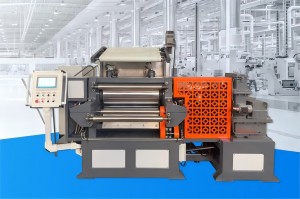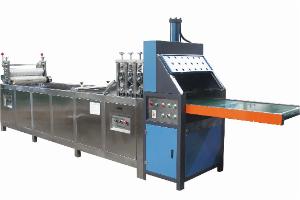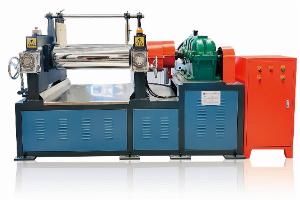
What's the Real Difference Between Three-Color and Five-Color Extrusion Machines?
2025-08-19
If you’re running a film production business in the U.S., you probably already know that equipment choice makes or breaks your efficiency. Many companies start with single-layer or two-layer extruders, but sooner or later, they hear about Three-Color Extrusion Machines and Five-Color Extrusion Machines.
Here’s the million-dollar question: what’s the real difference between them, and which one should you pick?
1. The Basics: Three-Color Extrusion Machines
A Three-Color Extrusion Machine uses three extruders that feed into a single die-head. This setup allows manufacturers to create three-layer films, often with different properties.
For example:
-
Layer 1: Strong outer material for durability.
-
Layer 2: Cost-saving recycled plastic.
-
Layer 3: Smooth surface for printing or branding.
This makes them a great fit for packaging, shopping bags, and agricultural films where durability and appearance both matter.
2. The Advanced Option: Five-Color Extrusion Machines
Now, here’s where things get exciting. A Five-Color Extrusion Machine takes it a step further by using five extruders. With this, you can build complex films with multiple functions — barrier layers, UV protection, anti-static coating, or high-gloss finishing.
Think of it like cooking: with three spices, you can make something tasty. But with five spices, your recipe gets way more depth and balance. The same logic applies here.
3. Key Differences Between Three and Five Colors
Let’s lay it out clearly:
| Feature | Three-Color Extruder | Five-Color Extruder |
|---|---|---|
| Layers | 3 | 5 |
| Applications | General packaging, bags, agricultural film | High-end food packaging, industrial films, barrier films |
| Flexibility | Medium | High |
| Cost | Lower investment | Higher, but better ROI |
So basically, if you’re in standard packaging, three layers are often enough. But if you’re targeting premium food packaging, medical films, or barrier-protected materials, the five-layer setup is the smarter investment.
4. Which One is Right for U.S. Manufacturers?
That depends on your market. If you’re supplying supermarkets, retail shops, or agriculture businesses, a Three-Color Extrusion Machine might be plenty.
But if your clients demand longer shelf life packaging, moisture-proof layers, or films with multiple protective barriers, the Five-Color Extrusion Machine is the obvious winner.
And let’s be real here — if you’re aiming to win over premium contracts, the five-color system will open more doors.
5. Why Source from a China Manufacturer?
We know what you’re thinking: “Should I really get such advanced machinery from overseas?” The short answer is yes.
Chinese manufacturers like Quanzhou Sanxing Machinery Industry and Trade Co., Ltd. have decades of expertise in building Three-Color and Five-Color Extrusion Machines. Benefits include:
-
Lower upfront investment compared to U.S. or EU suppliers.
-
OEM customization — roller width, die-head design, automation level.
-
Global shipping & support — manuals, video training, and spare parts supply.
-
Proven exports — already trusted by U.S. and European clients.
Truth be told, many U.S. companies regret not making the switch earlier.
At the end of the day, the choice between a Three-Color Extrusion Machine and a Five-Color Extrusion Machine comes down to your target market and growth strategy.
-
Go three-color if you want a reliable, cost-effective system for everyday packaging.
-
Go five-color if you want to break into premium markets with high-demand multi-layer films.
Either way, working with a trusted China manufacturer and supplier ensures you get quality equipment that fits your budget and helps you stay competitive.
So, what’s your next move? Maybe it’s time to take a serious look at upgrading your extrusion line.


